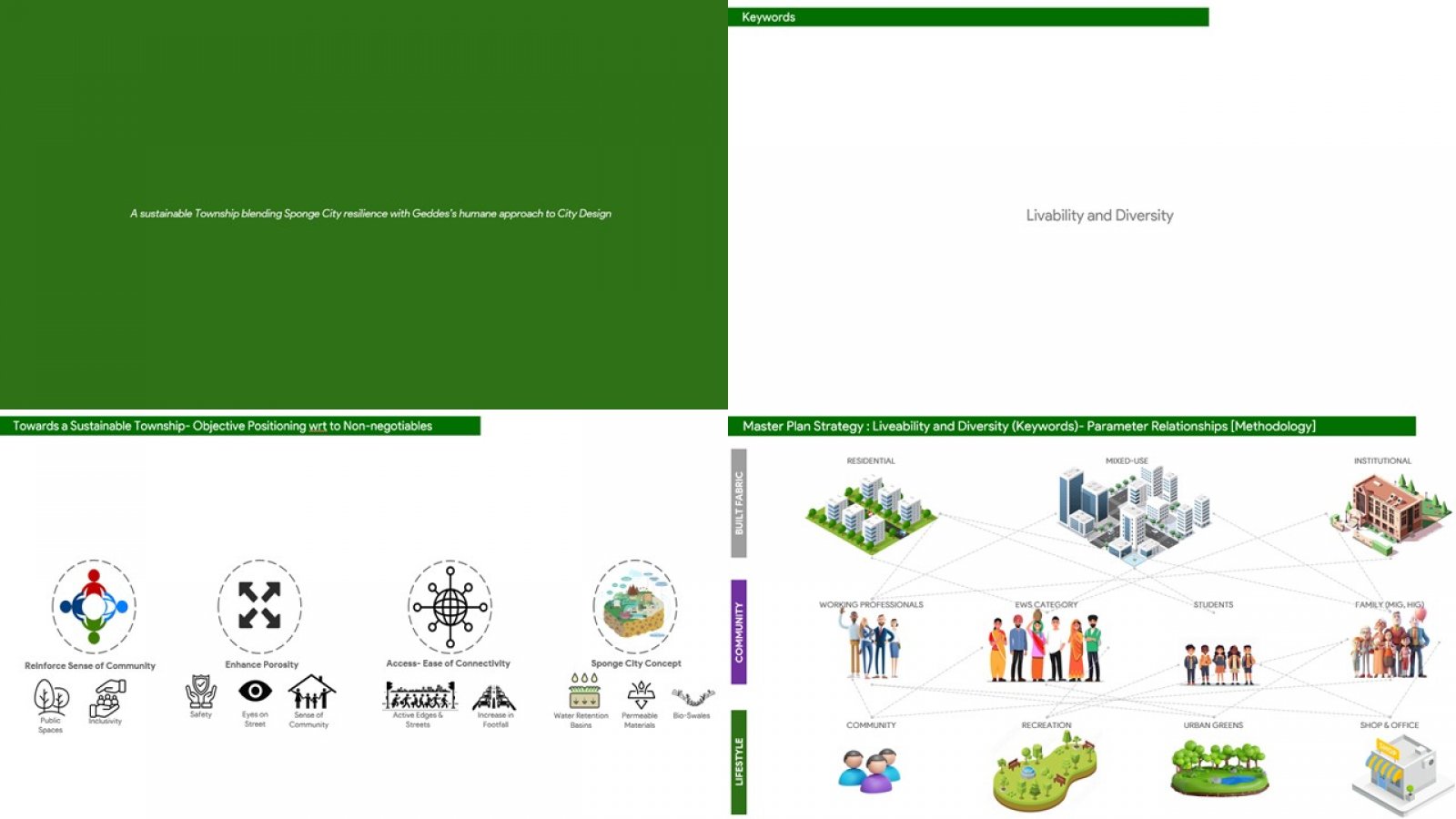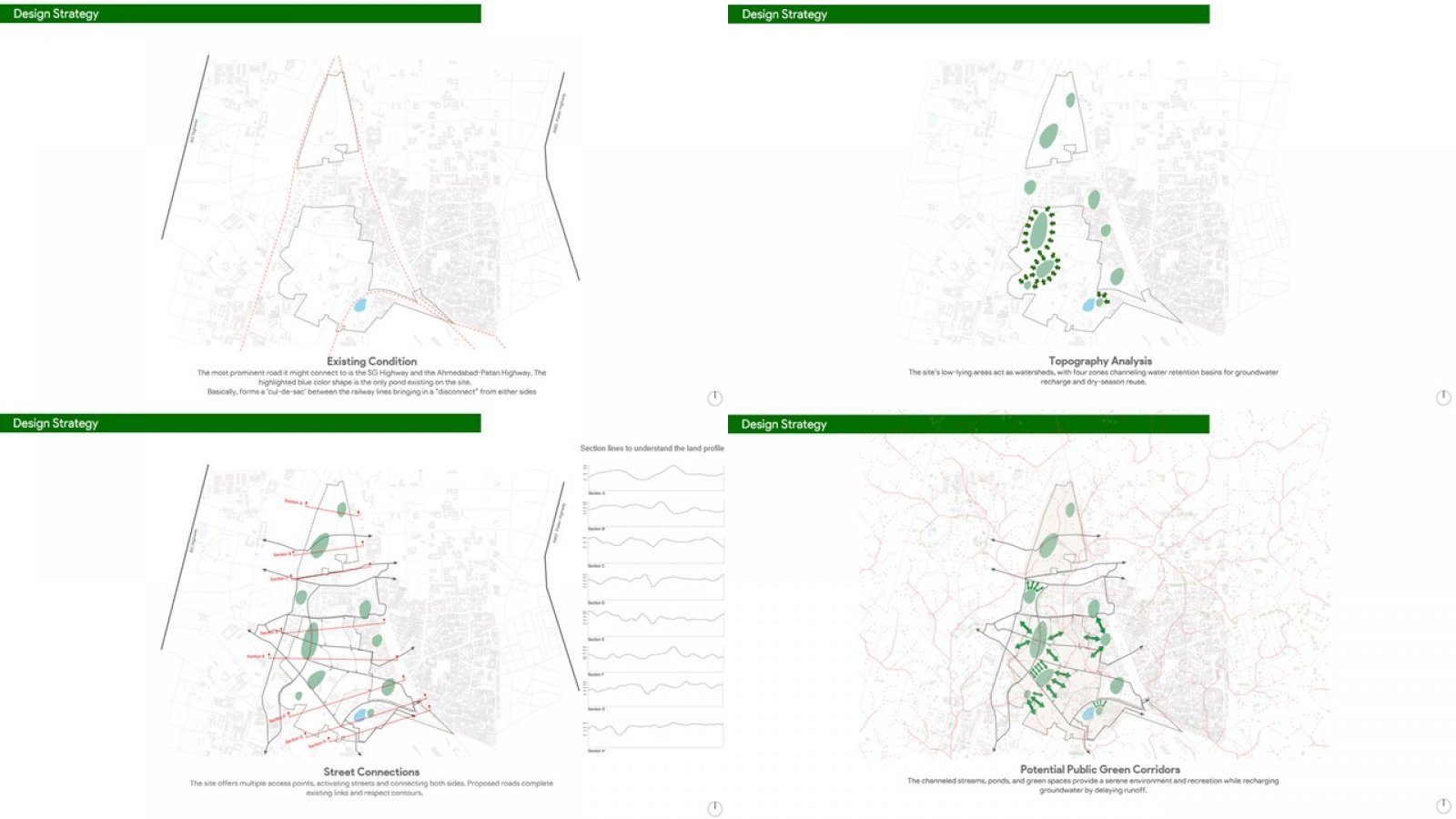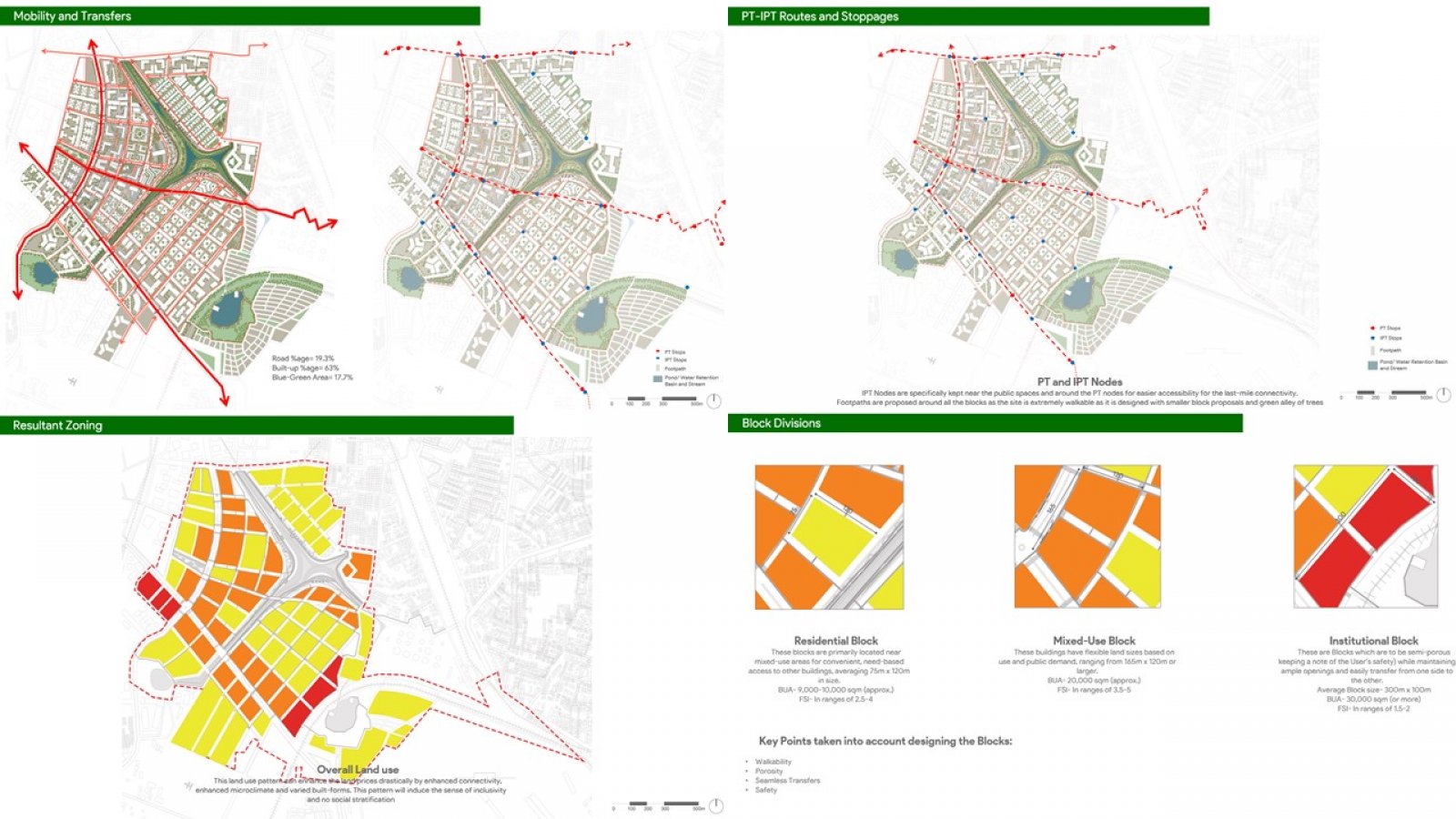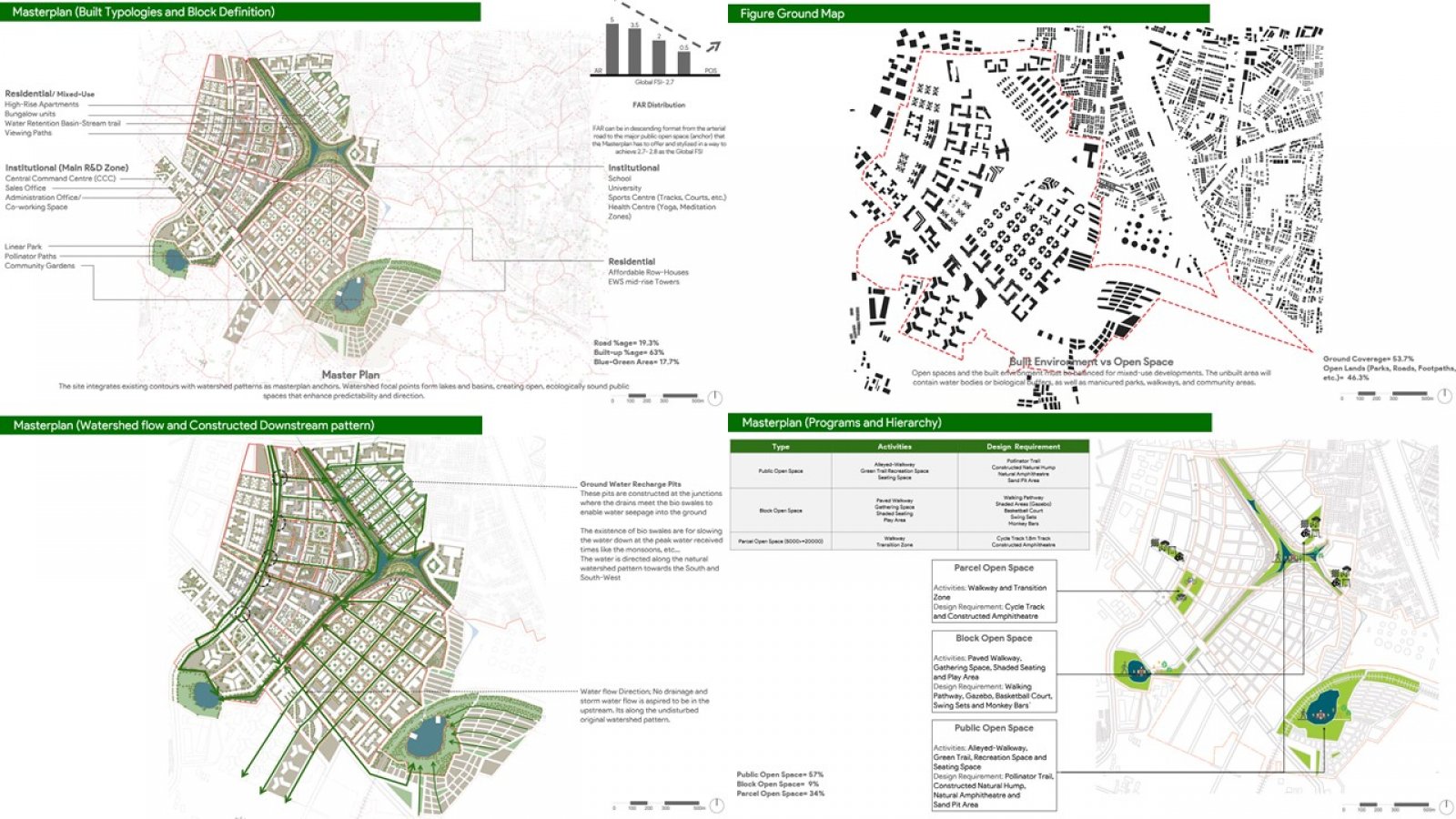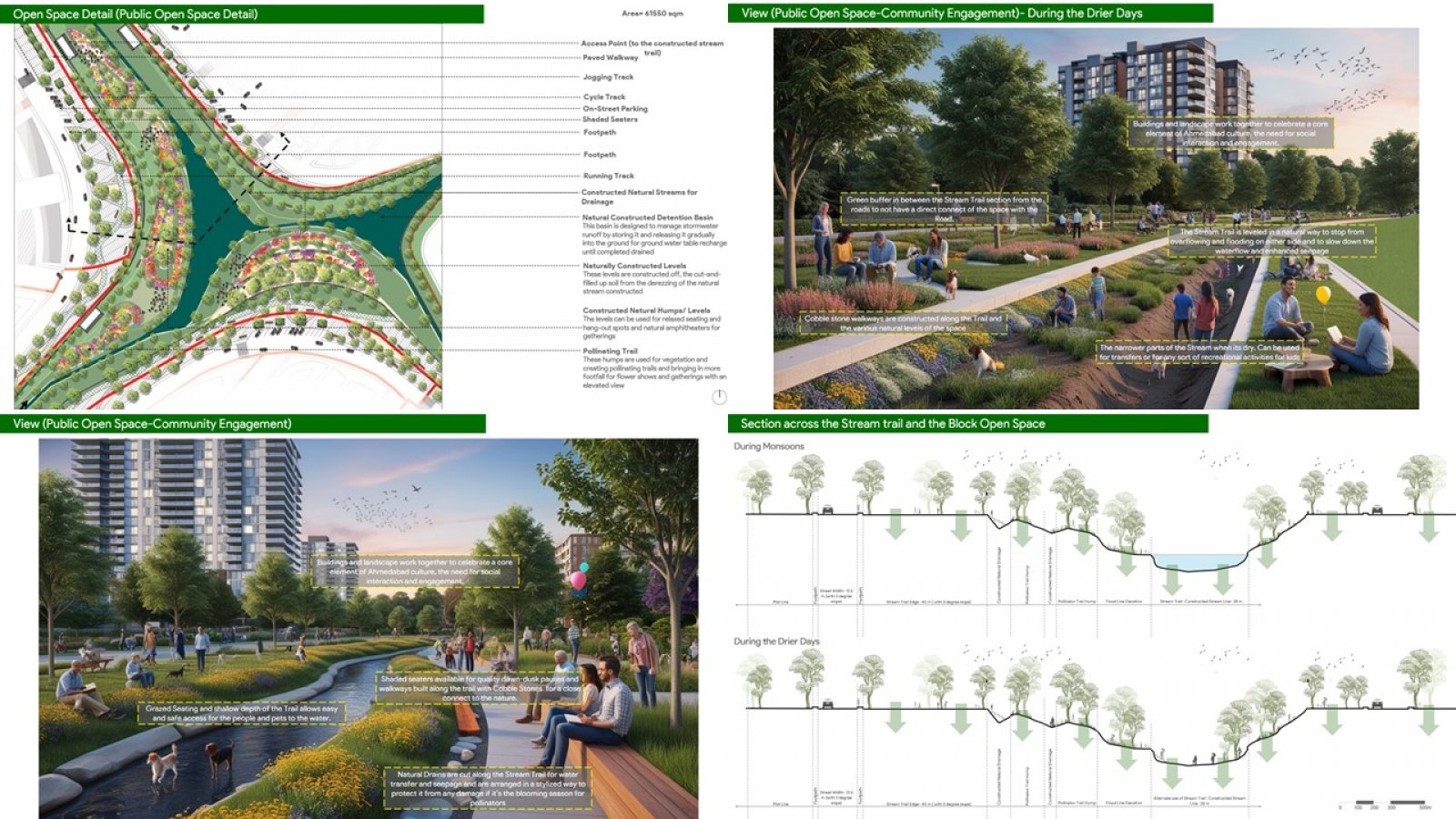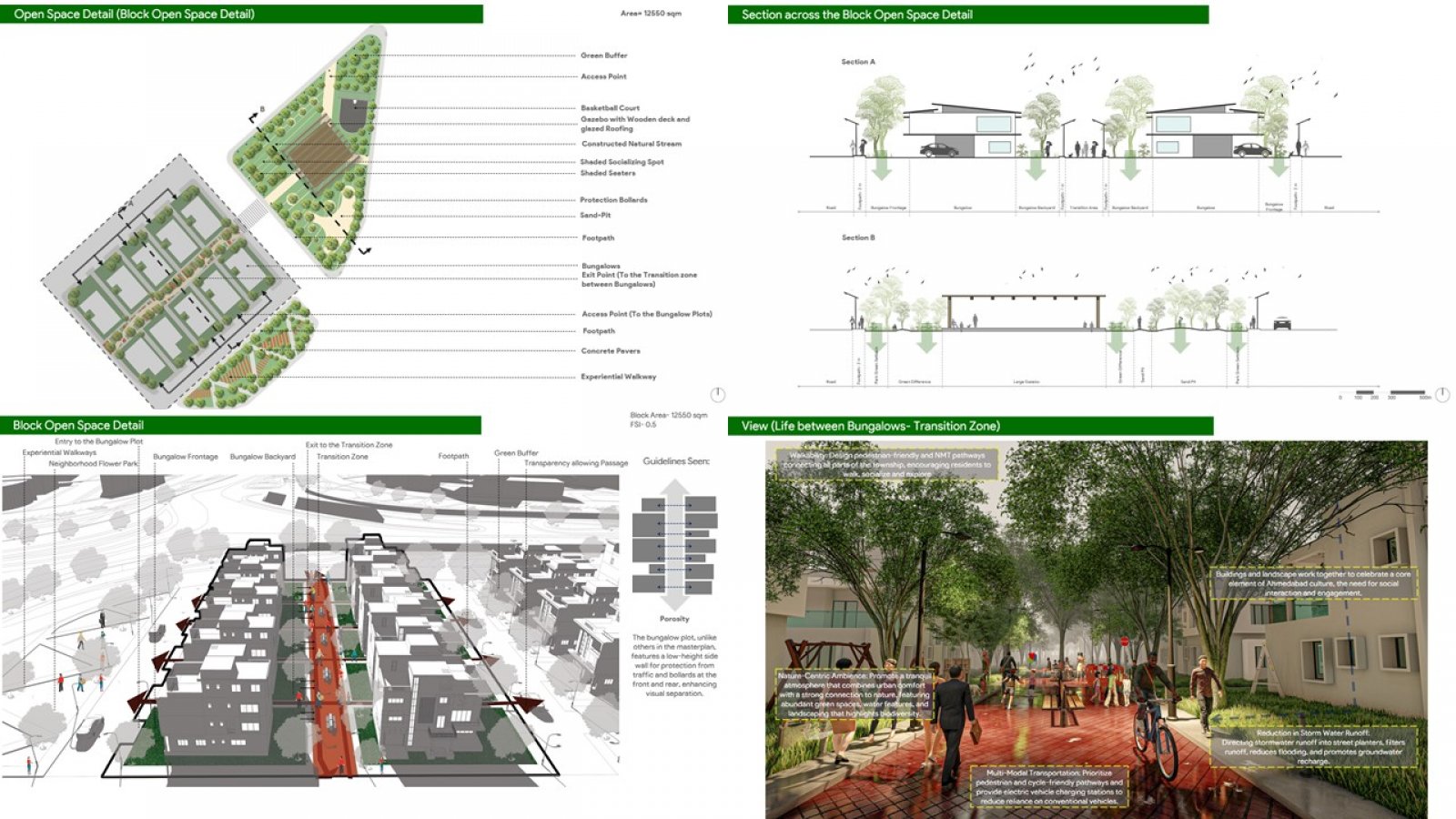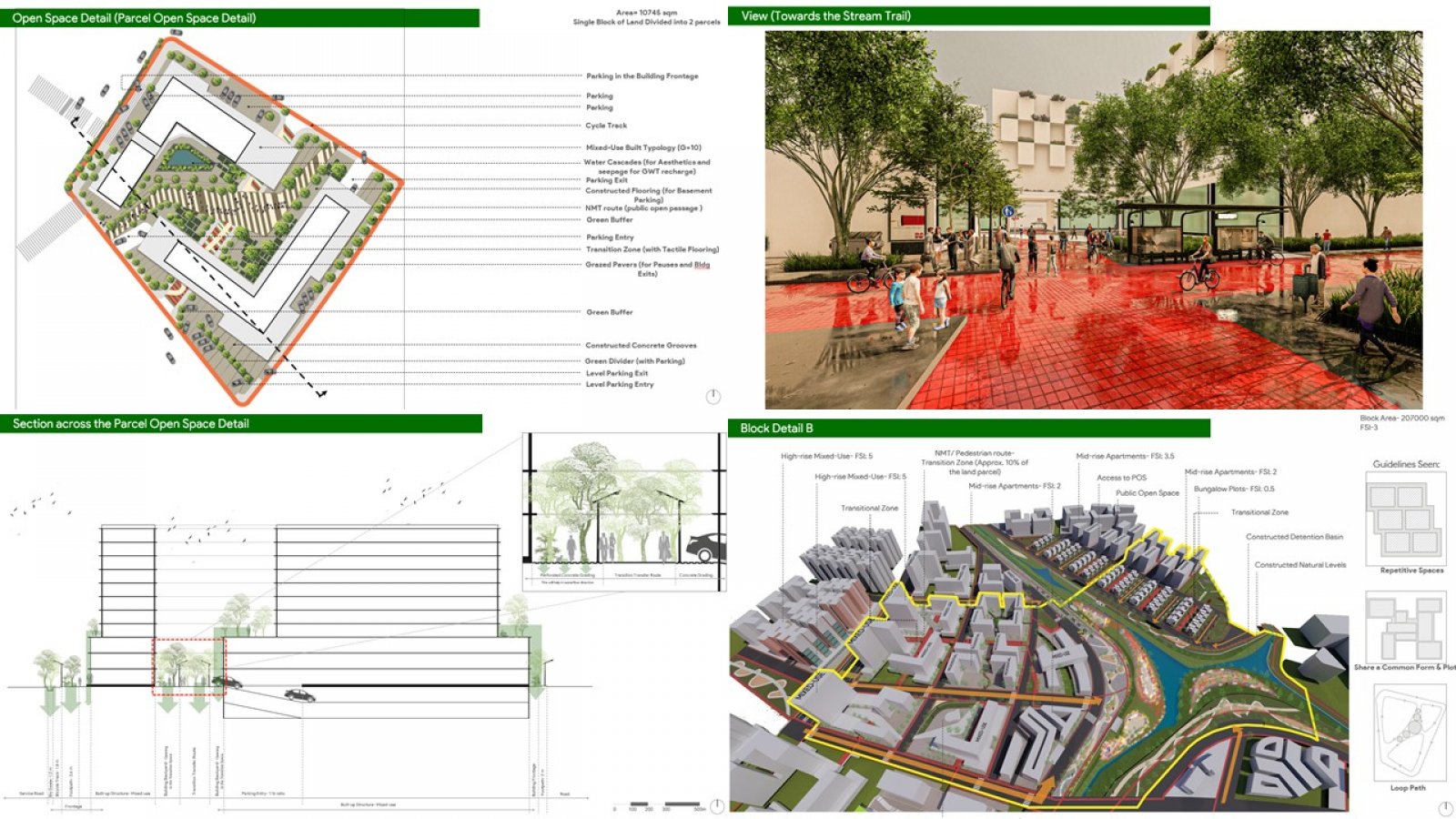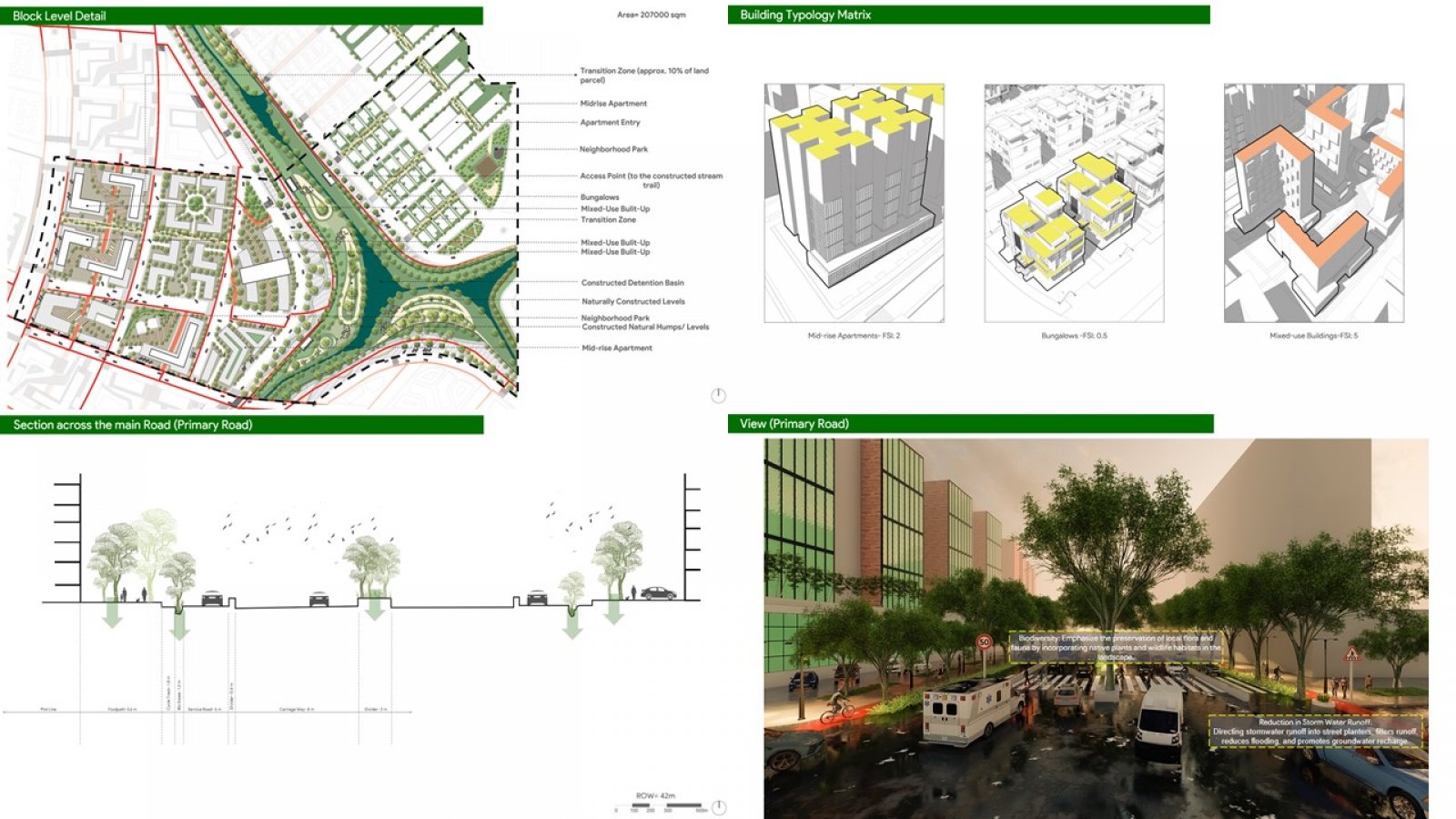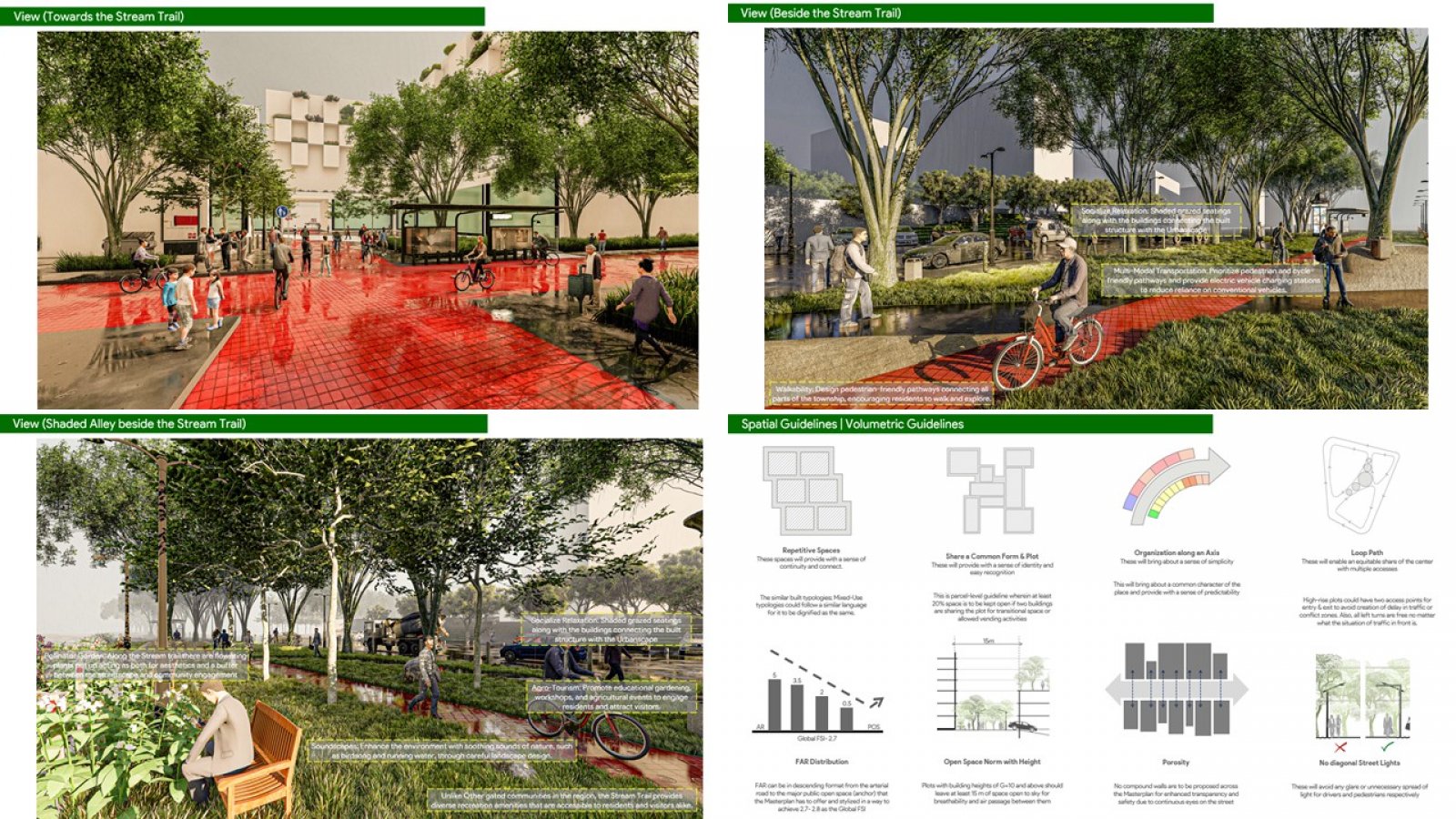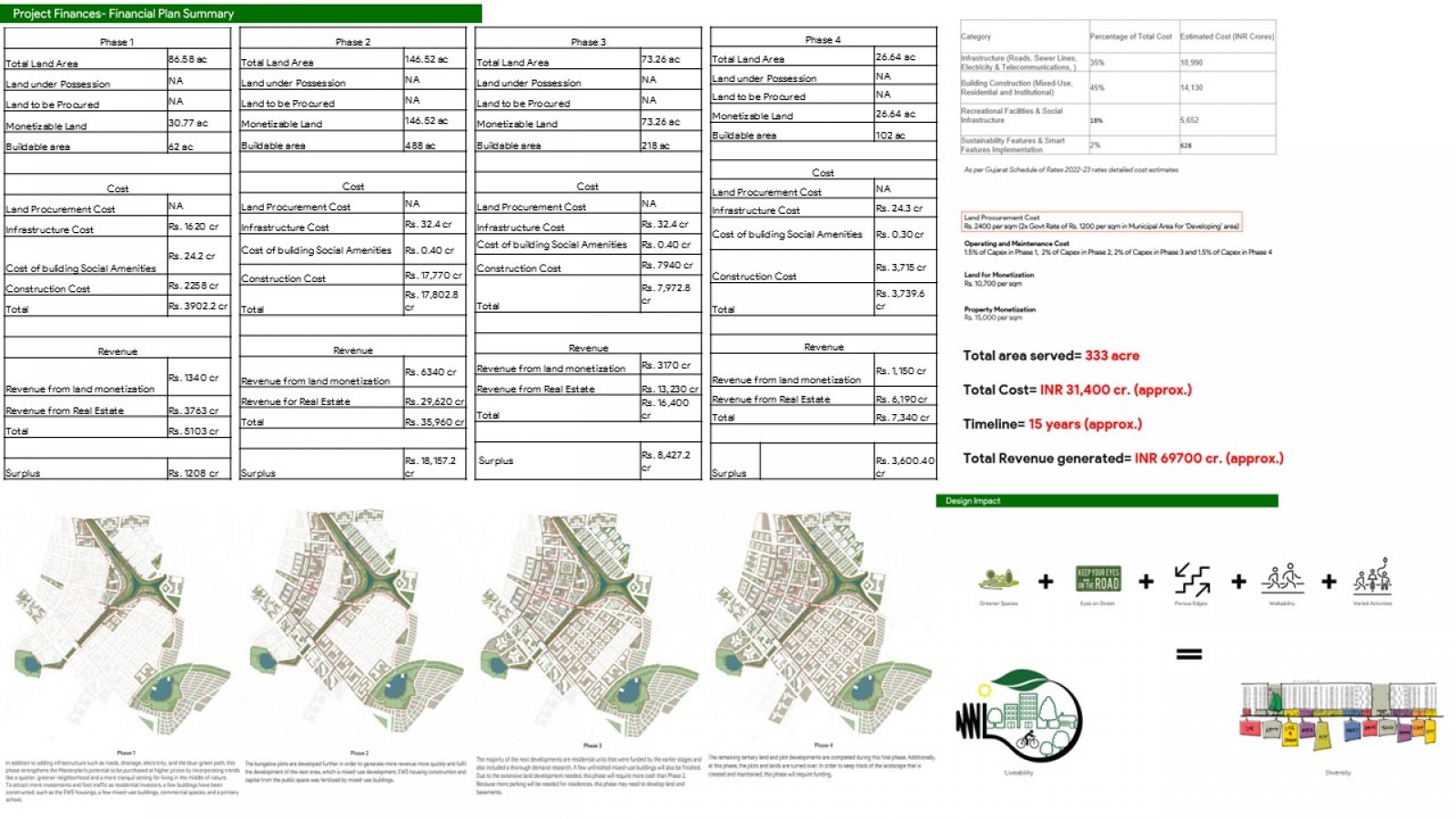Your browser is out-of-date!
For a richer surfing experience on our website, please update your browser. Update my browser now!
For a richer surfing experience on our website, please update your browser. Update my browser now!
The objective was to create a sustainable Township model that integrates Sponge City's resilience with Geddes’s humane approach to City Design. This model establishes a relationship between liveability and diversity, and it is classified into three parameters—Built Fabric, Community, and Lifestyle—representing humane approaches for a Township model.
View Additional Work